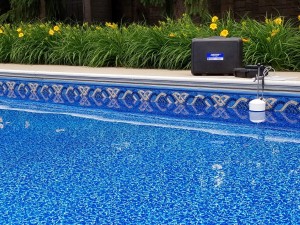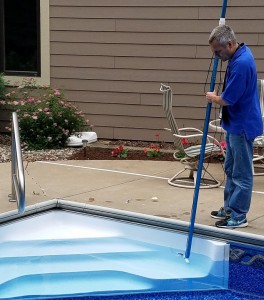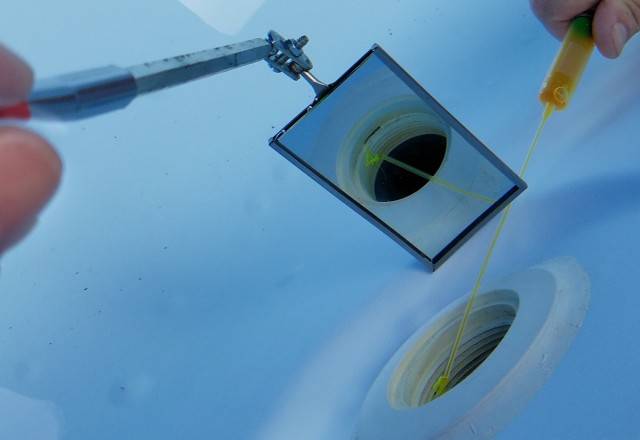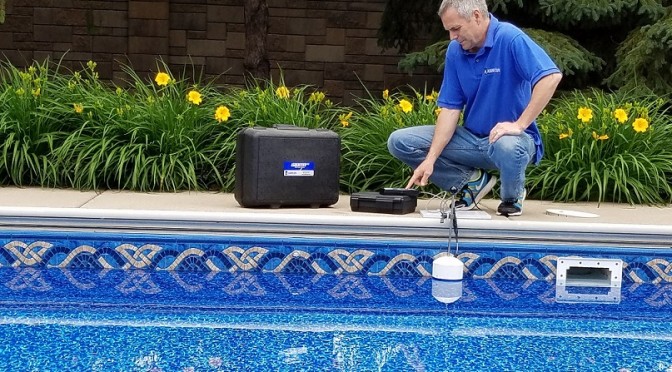Even though we stay busy making, selling and servicing equipment and supplies for the trade we make sure to regularly get into the field and find leaks to stay sharp and test products. Just recently we were called by a local pool professional who had a customer with an elusive leak and a long history of water loss in their pool. Two companies had been out before us with no success so we knew we were in for a challenge.
Background information from the customer:
- Water loss dates back several years.
- New liner installed last summer. Light was abandoned.
- Customer was suspicious of steps but said it had been thoroughly dye tested with no results.
- Was losing at least an inch per day and pool owner revealed it had lost 3/4″ in the 14 hours prior to our visit.
- Previous companies had done pressure tests and everything passed as leak free.

The first task for us was to gather our own information so the Leakalyzer was set up promptly upon arrival. The Leakalyzer is able to measure water loss to the 10,000th of an inch. It quickly (5 mins) confirmed that we were losing an inch or more of water per day. The initial test was done with the pump on – the way the pool was when we arrived. We then did another test with the pump off. The leak was consistent regardless of whether the pump was running or not. Since we were losing an inch or more per day we knew we were looking for a significant leak. Our calculations brought us to around a quart per minute.
The next step was to dye test the fitting and stair gaskets then get the LeakTrac going. A Quick 10 minute sweep of the pool with The LeakTrac confirmed there were no leaks in the new liner. All the gaskets passed their dye tests.
Even though a pressure test had been performed by others we wanted to do our own to make sure. We had a hunch it was the main drain line so we started there and did an air lock test. It held right at 4.5 pounds of pressure (generated from 8 feet of water column). We then tested the skimmer and return lines and they held pressure too.
Now with all the lines plugged the Leakalyzer was still showing us that the pool was loosing over an inch per day. The leak seemed be someplace other than the plumbing and the liner.

We decided at that point to check with the LeakTrac one more time before getting into the pool to dye test the main drain. As we more thoroughly swept the pool one return was screaming louder than the others. The return in the stairs. This shouldn’t be since the stair return doesn’t have screws penetrating through the fitting and it currently had a nylon plug in it eliminating any distracting connection to ground through the equipment. We shouldn’t be getting a signal here but we were. The signal was not around the fitting but right next to the plug.
A dye test confirmed that water was escaping right past the plug that was sealing the threads.
We needed a mirror to fully see the problem when the plug was removed. Inside the top of the fitting was a small crack that was pulling a lot of dye.

The customer was happy we had finally found the problem.
Quick Notes / reminders from the job:
- Following a systematic process of elimination helped zero in on the problem.
- Leakalyzer helped us understand the true nature of the problem and confirm we stopped the leak once fixed.
- LeakTrac helped us confirm the liner was OK and pinpointed the leak at the stair fitting.
- Mirror was essential to thorough dye testing.


